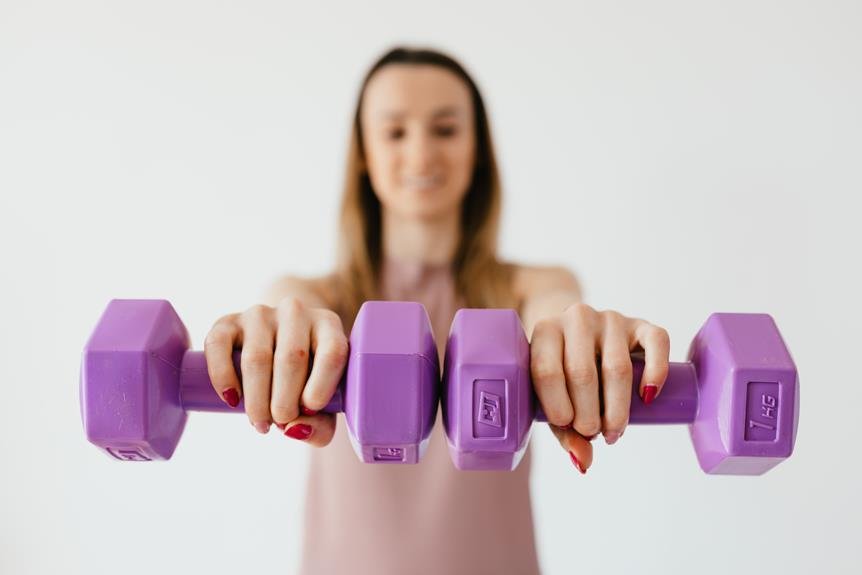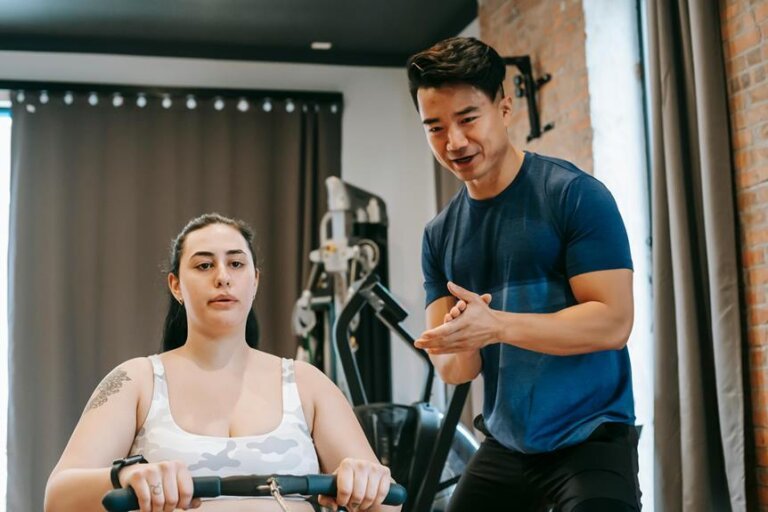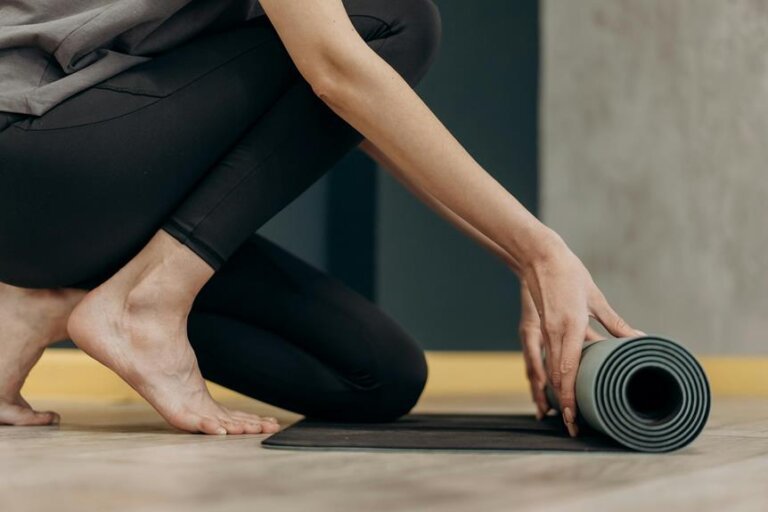Building a Strong and Lean Physique: Fitness Tips for Women
While you might believe that building a strong and lean physique is a daunting task reserved only for fitness enthusiasts, it's entirely achievable with the right guidance and determination. You don't need to dedicate countless hours to the gym or follow a strict, flavorless diet.
It's more about understanding your body, adopting a balanced nutrition plan, and incorporating a mix of strength and cardio exercises. But how do you strike the right balance?
Stay tuned as we explore essential fitness tips for women, aiming to help you sculpt a strong, healthy body, and maintain it effortlessly.
Understanding Your Body Type
To tailor a fitness plan best suited for you, it's crucial to first understand your specific body type. You've got to realize that everyone's built differently, and what works for one person mightn't work for you. Three main body types exist: ectomorph, mesomorph, and endomorph.
Ectomorphs are naturally thin with smaller bone structures and fast metabolisms. If you're an ectomorph, you'll find it hard to gain weight and muscle. On the flip side, mesomorphs are the lucky ones. They've medium bone structures and athletic bodies, and they can gain or lose weight relatively easily. Lastly, endomorphs are usually fuller, have a larger bone structure, and tend to gain weight easily.
These categories aren't set in stone, though. You may find yourself having characteristics from two body types or even all three. That's perfectly okay! It's all about understanding how your body works and reacts to different forms of exercise. From there, you can create a workout routine that caters to your unique needs. Remember, fitness isn't a one-size-fits-all concept. It's a personalized journey, so take the time to really understand your body type.
Importance of Balanced Nutrition
In the pursuit of optimal fitness, you can't overlook the importance of balanced nutrition. It's not just about counting calories, but understanding the balance of macronutrients, the role of hydration, and the impact of dietary fiber.
These elements can significantly influence your health and fitness journey.
Understanding Macronutrients Balance
Understanding the balance of macronutrients in your daily diet isn't just beneficial, it's crucial for optimal health and fitness. Macronutrients, namely proteins, carbohydrates, and fats, are the building blocks of your body's nutrition. You need to consume them in the right proportions to fuel your workouts and recover effectively.
Proteins are essential for muscle growth and repair, while carbohydrates provide the energy you need for intense training. Fats, although often vilified, are important for hormone production and can be a valuable energy source. Remember, it's not about eliminating any of these macronutrients, but rather understanding their role and incorporating them wisely into your meals. This balance can make all the difference in achieving your fitness goals.
Role of Hydration
Just as vital as macronutrients, proper hydration plays a key role in maintaining your body's balance and boosting your fitness performance. Water is crucial to your body's function. It's integral for digestion, absorption, and transportation of nutrients. It also aids in maintaining your body temperature and lubricating your joints.
Dehydration can hinder your performance, causing fatigue, dizziness, and muscle cramps. You'll also feel your energy levels drop, making it harder to meet your fitness goals. So, don't underestimate the power of a glass of water. Aim for at least 8 glasses per day, or more if you're working out intensely.
Impact of Dietary Fiber
Don't overlook the significant role dietary fiber plays in a balanced nutrition plan, as it's got a powerhouse of benefits for your fitness goals. Fiber aids in digestion, ensuring that your body absorbs the nutrients it needs while getting rid of what it doesn't.
It also aids in weight management by keeping you feeling full longer, thus reducing overeating. This can help you maintain a lean physique. Additionally, fiber supports heart health by lowering bad cholesterol levels.
Aim to include fiber-rich foods like fruits, vegetables, legumes, and whole grains in your diet. However, don't go overboard immediately. Gradually increase your fiber intake to prevent bloating. Remember, a balanced diet is pivotal to achieving your fitness goals.
Essential Strength Training Exercises
Let's dive into some essential strength training exercises that can significantly enhance your fitness journey. These workouts aren't just for bulking up; they're crucial for building strength, toning your body, and improving overall fitness.
The first exercise to consider is squats. This full-body workout targets your quads, hamstrings, and glutes primarily, but also engages your core and lower back. You can start with bodyweight squats and gradually add weights as you gain strength.
Next, consider push-ups. You might think they're just for your arms, but they're actually a full-body exercise, working your chest, shoulders, triceps, and core. If regular push-ups are too difficult, start with knee push-ups and work your way up.
Deadlifts are another vital exercise. They target your posterior chain, including your glutes, hamstrings, and back muscles. Start with a light weight to ensure proper form and gradually increase as you become stronger.
Role of Cardio in Fat Loss
While strength training is fundamental to your fitness regime, it's equally crucial to understand the role of cardio in accelerating fat loss. Cardiovascular exercises, commonly known as cardio, primarily target your heart and lungs, improving your overall stamina and burning calories simultaneously.
Cardio comes in many forms. You can jog, cycle, swim, or even dance. It's about finding what works best for you and sticking with it. When you engage in cardio, your heart rate increases, and you start burning calories. This calorie deficit, coupled with a balanced diet, leads to fat loss.
The beauty of cardio is that it's versatile and can easily be incorporated into your routine. You don't need any fancy equipment or a dedicated space. You can do it anywhere, anytime. The key is consistency. Aim for at least 30 minutes of moderate-intensity cardio most days of the week.
Recovery and Rest Days
Let's not forget the significance of recovery and rest days in your fitness journey.
They're not just about taking a break, but also about utilizing effective recovery techniques.
Understand how they contribute to your overall fitness and how you can maximize these days for better results.
Importance of Rest Days
Incorporating rest days into your workout routine isn't just beneficial—it's essential for your overall fitness and well-being. You might think pushing yourself constantly leads to quicker results, but that's a misconception. Overworking your body can lead to injuries, which can derail your fitness goals.
Rest days allow your muscles, nerves, bones, and connective tissue time to rebuild. This repair process is how your body grows stronger. Without it, you're at risk for overuse injuries, fatigue, and performance plateaus.
Furthermore, rest days contribute to maintaining a balanced and healthier lifestyle, keeping both your physical and mental health in check. So don't skimp on rest days—they're as important as your active days. Remember, achieving a strong and lean physique isn't a sprint, it's a marathon.
Effective Recovery Techniques
Now that you understand the importance of rest days, it's crucial to know the various recovery techniques that can enhance your body's healing process and get you back to your workouts in top form.
Firstly, prioritize sleep. It's during sleep that your body does most of its healing. Aim for 7-9 hours each night.
Secondly, hydrate well and eat nutrient-rich foods to fuel recovery. Don't forget about active recovery. Light exercises like yoga or walking can help keep blood flowing and promote healing.
Lastly, try techniques like foam rolling or massage to relieve muscle tension. Remember, it's not about how hard you push on workout days, but how well you recover that truly builds a strong, lean physique.
Keeping Motivation High Over Time
Maintaining your fitness motivation over time can be a challenging yet crucial aspect of your wellness journey. It's easy to start strong, but it's keeping that momentum that often proves tough. But don't worry, you've got this!
Firstly, set clear, achievable goals. Small wins fuel motivation. So, instead of aiming to lose 20 pounds in a month, strive for losing a pound each week.
Next, make fitness a lifestyle, not a chore. Find activities you enjoy, be it dancing, hiking, or yoga. If it's fun, you're more likely to stick with it.
Don't forget to reward yourself occasionally. Treat yourself to a massage or a new workout outfit after reaching a goal. However, avoid using food as a reward. That's counterproductive!
Remember it's okay to have off days. You're human, not a machine. Just make sure they don't turn into off weeks or months.
Lastly, surround yourself with positivity. Friends who encourage your fitness journey or a personal trainer who challenges you can keep your motivation high.
Stay patient, stay consistent, and don't give up. Your fitness journey is a marathon, not a sprint. Keep pushing, and you'll see the results you desire.
Frequently Asked Questions
How Does Hormonal Changes During Menstruation Affect a Woman's Fitness Routine?
During menstruation, hormonal changes can affect your fitness routine. You might feel fatigued or bloated, which can impact your stamina and strength. It's essential to listen to your body and adjust your workouts accordingly.
What Role Does Genetics Play in Muscle Building for Women?
Genetics greatly influences your muscle-building capability. They determine muscle size, fiber type distribution, and metabolic rate. But don't let this discourage you. With consistent effort, you can still achieve a strong and lean physique.
Are There Specific Exercises That Can Help With Post-Pregnancy Weight Loss?
Absolutely, there are specific exercises that can help with post-pregnancy weight loss. You'll find that a combination of cardio, strength training, and flexibility exercises can greatly assist in shedding those extra pounds.
How Can Women Balance Fitness Goals With Work and Family Responsibilities?
Juggling fitness, work, and family is like mastering a tricky dance routine. You've got to plan your time efficiently, prioritize self-care, and don't be afraid to seek support. Remember, it's your dance, make it work for you.
Are There Specific Fitness Tips for Women Going Through Menopause?
Yes, for menopausal women, focus on low-impact cardio like swimming, maintain strength training for bone health, and don't neglect flexibility exercises. Embrace a healthy diet, rich in calcium and vitamin D. It's never too late to start!
Conclusion
Building a bodacious, balanced body begins with understanding your unique physique, prioritizing proper nutrition, and pursuing powerful workouts.
Don't discount the decisive role of rest and recovery, and remember, cardio can be a critical component for carving out a lean figure.
Motivation might momentarily wane, but maintaining your momentum means mastering the mental game.
So, stay strong, savor the sweat, and strive for success in your quest for a formidable, fit, and fabulous form.






